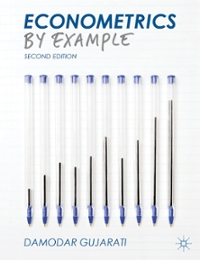Answered step by step
Verified Expert Solution
Question
1 Approved Answer
Economics 1. (18 points) Tax on labor income - Consider a one-period economy where the rep- resentative consumer has a utility function U (C, L)
Economics
 1. (18 points) Tax on labor income - Consider a one-period economy where the rep- resentative consumer has a utility function U (C, L) over consumption C and leisure L. Assume preferences satisfy the standard properties we assumed in class. The consumer has an endowment of H units of time. The household earns the wage w per hour supplied to the market and has wealth a which yields an interest rate r, so her income is partly coming from labor, partly from capital. So the consumer's budget constraint is: C=wN+(1+r)a (a) (3 points) Write the budget constraint relating consumption with leisure and use it to derive the relative price of leisure in terms of consumption. (b) (3 points) Write the representative consumer's problem as a constrained maxi- mization then transform it into a simpler unconstrained maximization. (c) (3 points) Derive an equation that implicitly denes the optimal labor supply N* of the household as a function of (w,a,r). Assume from now on that the household's preferences are U(C, L) = 111(0) + 7111(L) (d) (3 points) Derive the optimal labor supply N* of the household as a function of (w, a, r). (e) (6 points) What is the effect of a rise in the interest 1' on labor supply? Does it matter if a is positive (agent is a lender) or negative (agent is a borrower)? Why
1. (18 points) Tax on labor income - Consider a one-period economy where the rep- resentative consumer has a utility function U (C, L) over consumption C and leisure L. Assume preferences satisfy the standard properties we assumed in class. The consumer has an endowment of H units of time. The household earns the wage w per hour supplied to the market and has wealth a which yields an interest rate r, so her income is partly coming from labor, partly from capital. So the consumer's budget constraint is: C=wN+(1+r)a (a) (3 points) Write the budget constraint relating consumption with leisure and use it to derive the relative price of leisure in terms of consumption. (b) (3 points) Write the representative consumer's problem as a constrained maxi- mization then transform it into a simpler unconstrained maximization. (c) (3 points) Derive an equation that implicitly denes the optimal labor supply N* of the household as a function of (w,a,r). Assume from now on that the household's preferences are U(C, L) = 111(0) + 7111(L) (d) (3 points) Derive the optimal labor supply N* of the household as a function of (w, a, r). (e) (6 points) What is the effect of a rise in the interest 1' on labor supply? Does it matter if a is positive (agent is a lender) or negative (agent is a borrower)? Why Step by Step Solution
There are 3 Steps involved in it
Step: 1

Get Instant Access to Expert-Tailored Solutions
See step-by-step solutions with expert insights and AI powered tools for academic success
Step: 2

Step: 3

Ace Your Homework with AI
Get the answers you need in no time with our AI-driven, step-by-step assistance
Get Started


